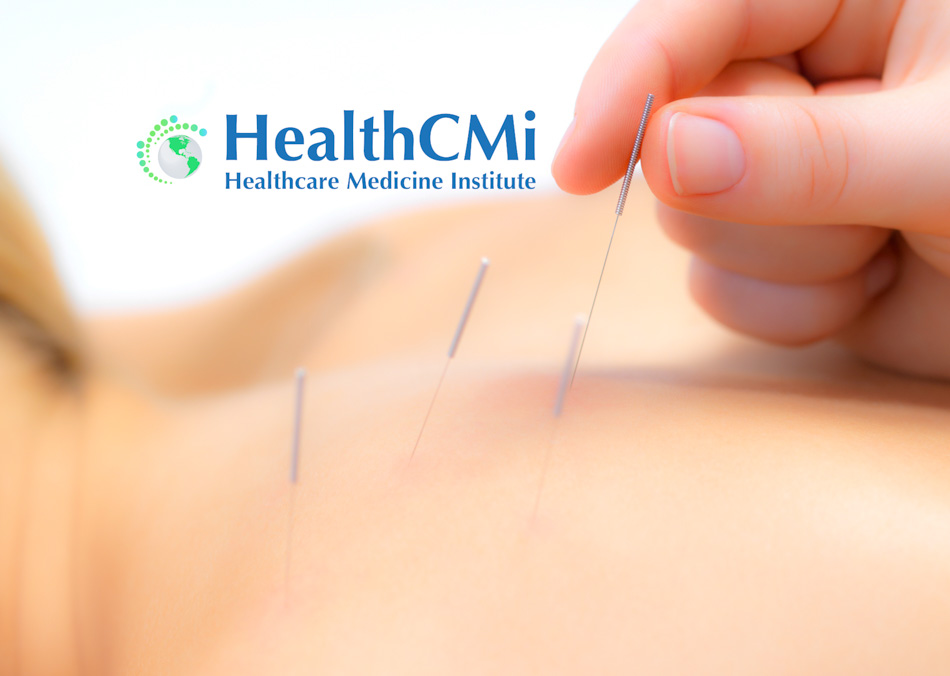
This summer’s acupuncture research highlights clinically relevant developments in allergic rhinitis, chronic fatigue syndrome, and anxiety-related insomnia. Each study demonstrates how precise acupuncture protocols can produce measurable results, with clear procedural guidance for practitioners.
The first featured study, from the University of Erlangen–Nuremberg, investigated manual acupuncture combined with the antihistamine cetirizine for seasonal allergic rhinitis (SAR). SAR, caused by IgE-mediated hypersensitivity to airborne allergens like pollen, leads to nasal congestion, sneezing, and itching during peak seasons [1]. Twenty-nine patients were randomized: 16 received real acupuncture plus cetirizine, six received sham acupuncture plus cetirizine, and eight took cetirizine alone.
Over eight weeks, the acupuncture group received 12 treatments—twice weekly for four weeks, then weekly for another four weeks [1]. Needles (0.25 mm × 25–30 mm) were sterile, single-use filiform type, inserted to elicit deqi, retained 20 minutes, and manually stimulated every five minutes using lifting-thrusting and bidirectional rotation. Electrical stimulation was not used [1].
The core point set was LI4 (Hegu), LI11 (Quchi), LI20 (Yingxiang), and Yintang (Ex-HN3). Additional points were selected per TCM pattern differentiation, such as GB20 (Fengchi), LV3 (Taichong), ST36 (Zusanli), LU7 (Lieque), and SP6 (Sanyinjiao). On average, 15.7 needles were used per session, compared with about 10 in the sham group [1].
Results showed a 30–40 percent reduction in nasal symptom scores by week eight in the real acupuncture group. Cytokine assays of nasal secretions revealed significant decreases in IL-1β, IL-8, IP-10, MIP-1β, MCP-1, and eotaxin. No similar changes occurred in the other groups [1]. Importantly, Th1/Th2 cytokines such as IFN-γ, IL-4, IL-5, and IL-10 remained unchanged, suggesting a local anti-inflammatory and neuromodulatory effect rather than systemic immune rebalancing [2][3].
The second study examined a randomized controlled trial based on the TCM concept of “brain–kidney interaction” in patients with chronic fatigue syndrome (CFS). Sixty-eight participants were divided equally into an acupuncture group and a control group receiving oryzanol, vitamin B1, rest, and exercise guidance [1].
The acupuncture group received daily sessions five days a week for four weeks. Needles (0.25 mm) were inserted bilaterally, except GV20 (Baihui), to elicit deqi, and retained for 30 minutes without electrical stimulation. The prescribed points were GV20, GB20 (Fengchi), BL20 (Pishu), BL23 (Shenshu), SP6 (Sanyinjiao), and KD3 (Taixi) [1].
After treatment, the acupuncture group reported significantly lower fatigue scores (FS-14, p < 0.05), improved physical and psychological symptoms (SPHERE, p < 0.01), and better sleep quality (PSQI, p < 0.01) than controls. Blood analysis showed significant drops in IL-6 and IFN-γ (p < 0.01), markers of systemic inflammation and immune dysregulation in CFS [1]. The authors suggest that acupuncture may restore HPA-axis balance and downregulate Th1-dominant immune activity.
The point prescription reflects a balanced approach: GV20 and GB20 regulate the central nervous system; BL20 and BL23 tonify spleen and kidney Qi; SP6 and KD3 nourish yin/yang and calm the shen. The high treatment frequency is notable, offering a model for neuro-immune regulation in CFS care.
The third study addressed chronic insomnia with comorbid anxiety and depression in a single-blind, placebo-controlled trial. Sixty patients were randomized into real or sham acupuncture groups [1].
The real acupuncture group received 12 sessions over four weeks, three times weekly. Needling targeted GV20 (Baihui), Yintang (extra point), HT7 (Shenmen), and SP6 (Sanyinjiao), with HT7 and SP6 bilaterally. Needles (0.25 mm) were inserted to deqi, and manual stimulation was applied every 10 minutes during the 30-minute retention period. No electrical stimulation was used [1].
The sham group underwent superficial (2–3 mm) needling at non-acupoints without deqi or stimulation. The acupuncture group experienced greater reductions in HAMA, HAMD, and PSQI scores, with results sustained three months post-treatment. Blood tests revealed decreased cortisol and increased serotonin (5-HT) levels in the acupuncture group, indicating HPA-axis modulation and enhanced serotonergic function [1].
Across these three studies, a common theme emerges: carefully selected points, consistent needle specifications, manual deqi stimulation, and structured treatment schedules can yield significant biomedical and clinical results. For allergic rhinitis, twice-weekly sessions with local and distal points reduced nasal cytokine levels. For chronic fatigue syndrome, daily treatments over four weeks lowered systemic inflammatory markers. For anxiety-linked insomnia, thrice-weekly sessions modulated stress hormones and neurotransmitters.
These protocols provide acupuncturists with replicable, evidence-based models. They integrate traditional theory—such as brain–kidney interaction and pattern differentiation—with modern measures like cytokine panels and endocrine assays. By following the detailed methods and point selections, practitioners can deliver treatments that are both rooted in TCM and supported by quantifiable biomedical outcomes.
Sources:
[1] Gellrich, Donata, et al. “Acupuncture and its effect on cytokine and chemokine profiles in seasonal allergic rhinitis: a preliminary three-armed randomized controlled trial.” European Archives of Oto-Rhino-Laryngology 279 (2022).
[2] Liu C, Zhao Y, Qin S, Wang X, Jiang Y, Wu W. Randomized controlled trial of acupuncture for anxiety and depression in patients with chronic insomnia. Ann Transl Med. 2021 Sep;9(18):1426. PMID: 34733978; PMCID: PMC8506741.
[3] Xu, Yu-Xin, Hua-Song Luo, Dong Sun, Rui Wang, and Jian Cai. “Acupuncture in the Treatment of Chronic Fatigue Syndrome Based on ‘Interaction of Brain and Kidney’ in TCM: A Randomized Controlled Trial.” Zhongguo Zhen Jiu 39, no. 2 (2019): 123–127.